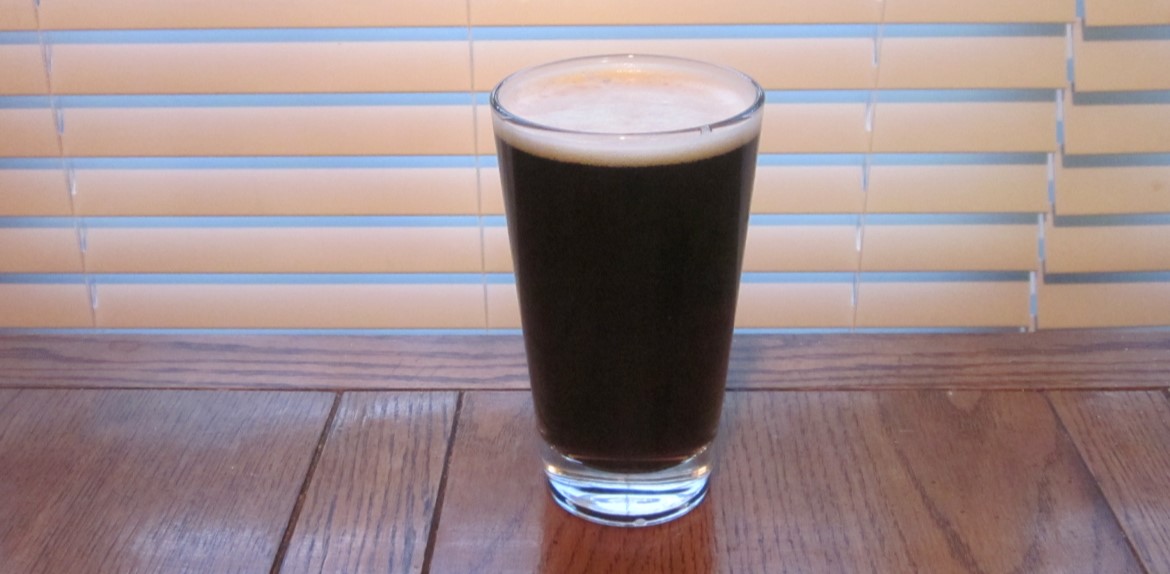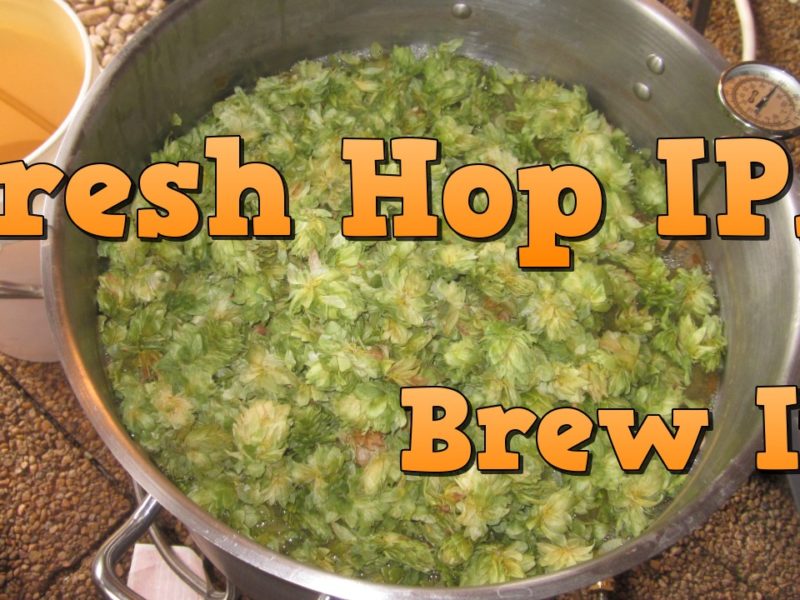I brew and evaluate my house English Porter in preparation for the August 2021 Dominion Cup competition. Learn about the background of my house recipe and my current thoughts.
Companion Video
The companion video to this article is up on YouTube. In the video I provide a summary of my history and the recipe, which is covered in more detail below. I include some brewing footage and an evaluation of the beer. Since this is a competition beer, I filled out a BJCP score sheet to see how it compares to the judge’s evaluation.
English Porter #1 – Custom Recipe
Lets first start with how I got here. How did I design my house English Porter recipe? Why do I think this beer is competition ready?
In December 2018 I was just getting back into brewing after taking about a 2 1/2 year hiatus. I got my feet wet by brewing an IPA. Mistakes were made but it was drinkable. In an attempt to simplify my brew day, I decided to swap my crude 3-vessel process for BIAB. I decide to create an English Porter recipe to start my BIAB journey.
Over the years, I have brewed several Porters. Unfortunately, I was not very good about keeping track of recipes. I moved between software a few times over the years. Plus I lost a few years of recipes when the iPod I was using died. This is the core recipe I came up with, mostly based on some ideas and goals:
- 8 lbs (76%) 2-Row Pale Malt (Briess)
- 1 lb (9.5%) Victory Malt
- 1 lb (9.5%) Crystal Malt (120L)
- 8 oz (5%) Chocolate Malt
- 1.5 oz East Kent Goldings at 60 min
- 0.5 oz East Kent Goldings at 30 min
- SafAle S-04 (English Ale) dry yeast
The beer was okay. My notes point out a nutty flavor and grainy harshness that is likely from too much Victory malt, and some raisin character from the dark Crystal. I know that raisin character is present in many English Porters, but it is not what I wanted.
I felt like I missed the mark by enough that moving forward I needed more than just one small tweak.
English Porter #2 – Brown Malt FTW
I came across a BYO article about Brown Malt with a clone recipe for Fuller’s London Porter clone. I took a lot of inspiration from that recipe and revamped mine.
- 7.5 lbs (70%) Maris Otter Pale Ale Malt
- 1.5 lb (14%) Brown Malt – Crisp – 65 L
- 1 lb (9%) Crystal 60
- 12 oz (7%) Chocolate Malt – 450 L
- 1.5 oz East Kent Goldings – 60 min
- 0.5 oz East Kent Goldings – 20 min
- WLP013 London Ale
This batch was one of my first that included making water chemistry adjustments. I had an issue with my mash temperature, but there was enough good stuff in this batch that I knew I was getting closer to my goal. The 1.5 lbs of Brown Malt seemed a bit too dominate. In the future I would scale that back to 1 lb. For the next batch, I did a split batch between S-04 and WLP013 and decided that WLP013 was a good choice.
English Porter – Current House Recipe
In February 2021 I brewed a batch that was almost exactly where I wanted it. This recent batch was almost the exact same recipe. The only real difference is batch size (2.5 vs 5 gallons) and a tweak to the Crystal malt based on supply (Bairds 50/60 vs Crisp 40/50).
I am very happy with the current state of this recipe. Note that if you look at the English Porter recipe in “Brewing Classic Styles” it is almost identical to mine. Maybe “great minds think alike” or maybe I took more inspiration from that recipe that I realized at the time. The BCS recipe is also very close to the one in BYO.
Recipe Statistics
- Style: 13c – English Porter
- Batch Size: 5.5 gals [21 L] into fermenter
- Original Gravity (OG) : 1.049
- Final Gravity (FG) : 1.013
- ABV : 4.7%
- Efficiency : 73%
- IBU : 28
- SRM : 28
Grain Bill
- 7.5 lbs [3.4 kg] – Pale Ale Malt (Maris Otter) – Crisp
- 1 lb [450 g] – Brown Malt – Crisp
- 1 lb [450 g] – Crystal 40/50 – Crisp
- 10 oz [280 g] – Chocolate Malt 450L – Crisp
Hop Additions
- Boil 60 min
- 0.4 oz [11 g] – Warrior (16.2% aa) – 23.4 IBU
- Boil 10 min
- 0.5 oz [14 g] – East Kent Goldings (5.3% aa) – 5.2 IBU
Boil Additions
- 2 g – Irish Moss – Boil 10 min
Yeast
- WLP013 London Ale – 1L Starter
Water Profile
- Calcium (Ca) 56 ppm
- Magnesium (Mg) 20 ppm
- Sodium (Na) 54 ppm
- Sulfate (SO4) 115 ppm
- Chloride (Cl) 85 ppm
- SO4/Cl 1.35
To adjust my tap water I used:
- 1.5 g – Gypsum (Calcium Sulfate)
- 1.5 g – Calcium Chloride
- 3.8 g – Epsom Salt (Magnesium Sulfate)
- 2 g – Baking Soda (Sodium Bicarbonate)
- 1/2 tablet – Campden (Potassium Metabisulfite)
Mash
- 7.7 [29 L] gallons strike water at 157F [69.5 C]
- 152F [66.5 C] for 60 minutes
Ferment
- Pitch yeast at 64 F [18 C]
- Ferment at 64 F [18 C] until fermentation slows (day 3)
- Raise to 68 F [20 C] over 2 days
- Closed keg transfer once complete (day 10)
My Keys to a Great English Porter
Brewing several iterations of this English Porter recipe as well as a few other English style beers taught me a few things. Note, that while I think I am a smart guy, I have not quite figured out the naming of the various British Isle regions, islands and countries. I will just use the term English.
- Brown Malt: Brown Malt is a wonderful addition. It gives a really nice blend of coffee, chocolate and light roasty characters. I have only used the version from Crisp, which is rated at 60-70L. Some maltsters produce a Brown Malt more in the 30L or 40L range.
- Quality English Malts: Maybe it is just my bias of knowing the ingredients used to make a batch of beer, but I just enjoy an English beer made with English malts. Crisp Maris Otter has been my Pale Ale malt of choice lately. I have enjoyed malts from Crisp, Bairds, Simpsons and Thomas Fawcett.
- English Yeast: There are plenty of English yeasts available (probably too many). While they have similarities, there is also a good range of flavors. I have also found they can act differently and react to different fermentation temperatures and schedules. While I really like WLP013 London Ale, my advice is to find a yeast you enjoy an learn how it works.
- Adjusting pH: While I made other changes along the way, getting the pH into a decent range helped quite a bit. With the combined Brown + Crystal + Chocolate, this recipe has 26% roasted and crystal malts! My first batches were coming in at around 5.0. The software I have tried always predicts a pH 0.2 or more higher than what I measure. So now I target a 5.6 pH in Bru’n Water and plan for an actual pH around 5.4.
Next Steps and Future Adjustments
While I am very happy with the current state of this recipe, there are always things to tweak or try out.
- Water Profile: I have mostly reused a water profile that I came up with a couple years ago. As I have gained more experience with water adjustments, there are some things I want to play with. I will probably simplify the adjustments by removing the Epsom Salt, and maybe target Sulfate and Chloride around 80 ppm for a 1:1 ratio.
- Evaluate Yeasts: I have been trying to move recipes towards dry yeasts. The long term storage and ease of use is appealing to me. While I am not a massive fan of S-04 for this style of beer, I want to try out some other options. If I could use the same dry yeast for malty English beers and NEIPA/Hazies, that would be appealing. A trial with Verdant is on my list.
- Competition Feedback: I am curious about what feedback I might get or if it will change my thoughts. I might get some feedback that will help me improve the overall beer, or I might just get feedback on how to tweak the recipe to better compete in competitions.



